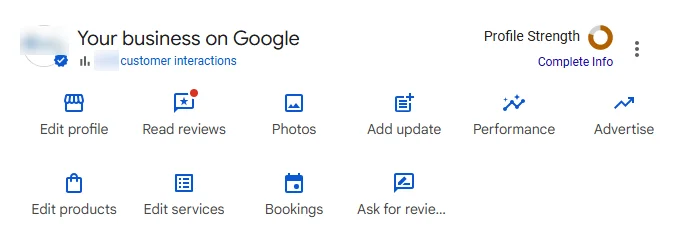It's easy to see marketing as a process specific to attracting and converting prospects — the practice of generating and capitalizing on potential customers' interest.
But once that potential has successfully been removed from the equation, and the prospect of winning a prospect's business is no longer prospective, are you supposed to stop marketing to them altogether?
Absolutely not.
Your current customer base is a perfectly lucrative wellspring of new and sustained business opportunities that you should constantly be tapping into. That's where the concept of customer marketing comes in — a school of marketing that allows you to get much more out of your customers than their initial business.
Let's take a more thorough look at what customer marketing is and a picture of the five key elements of a successful customer-driven marketing strategy.
Customer marketing is, in large part, the art of building customer loyalty and enthusiasm in the hope that those elements will ultimately translate to new business. And in the context of the practice, the term “new” takes on multiple meanings.
“New” business could mean existing customers buying new products or services as you develop them. It could mean current customers upgrading the products of yours they currently leverage or upping the tier of your service they subscribe to.
Or, and perhaps most importantly, it could mean customers being enthusiastic enough about your business to evangelize to their friends and family about how awesome your company is to attract new customers for you.
Ultimately, a solid customer-driven marketing strategy is a way to leverage your current customers as marketing assets. The process is incredibly useful — but often tricky to navigate. Here are some of the key components of an effective customer-driven marketing strategy.
1. Leverage buyer personas to segment and understand your customers.
This point applies to virtually every kind of marketing, and a customer-driven marketing strategy is no exception. The success of these kinds of efforts inevitably leans on your ability to understand and approach the people you're trying to appeal to. That's why it's in your best interest to use detailed buyer personas to guide your customer marketing efforts.
As per HubSpot's own definition, a buyer persona is “a semi-fictional representation of your ideal customers based on data and research.” Who are your customers? Can you identify multiple segments with different interests and sensitivities? What kind of customer marketing will best suit those various bases?
For instance, say you're in the B2B SaaS space, and various iterations of your software are consistently bought by both freelance developers and decision-makers at midsize businesses.
Those two groups would warrant the creation of two separate personas — ones that will probably be fundamentally different in how they approach your product and can be best appealed to.
Say you've recently released a new paid add-on to your program tailored to appeal to companies with over 100 employees and want to sell to established customers.
If you wanted to create an email campaign to support your customer-driven marketing efforts, you would refer to your midsize business decision-maker persona for cues on appropriate messaging and specific contacts.
That way, your customer marketing effort would be adeptly targeted. You would reach the most interested customers with appropriate content — all without bothering or alienating your other base.
One way or another, you have to know your customers before you can market to them effectively. Creating, maintaining, and referring to detailed buyer personas is central to that process. You can learn more about the nature and process of creating buyer personas here.
2. Provide exemplary customer service.
Two of the primary endgames of a customer-driven marketing strategy are garnering customer loyalty and facilitating customer evangelism. Those factors tend to hinge upon your customers' experiences — their experiences with your product or service and their experiences with your company as a whole.
The latter tends to be easier to control than the former, so investing in customer service is always a must. Make sure your customer support infrastructure is sound.
Be thorough and responsive when addressing individual customers' problems and concerns with your product — whether that be through email, over live chat, on the phone, or in person.
Have that structure in place and those resources on-hand to ensure that any potential problems your customers might have are immediately, patiently, and thoughtfully addressed.
They'll help you delight your customers and provide specific insight into what you could be doing better — two actions that will inform your customer marketing strategy and allow you to maintain a happier customer base that will be more receptive to it.
3. Listen to and engage with your customers.
Customer feedback is central to the efficacy of any customer marketing strategy. How can you know what your customers want and expect out of your company if you don't listen to them? If you ignore their thoughts and input, you're undermining your ability to appeal to them as meaningfully as possible.
Pay careful attention to how customers are interacting with your brand on social media. Hear what they say over those platforms and be willing to adjust your product development, messaging, outreach, and customer-driven marketing strategies accordingly.
In many cases, just looking and listening won't be enough. Engage with your customers online. Actively interact with them on social media. Ask for their feedback and insight yourself. Address issues and concerns that they might be raising personally.
Your customer-driven marketing strategy, at its core, is a means of cultivating and capitalizing on customer satisfaction. One of the best ways to do both is to let customers know that you care, are willing to listen, and will act on the feedback they offer.
Consistently demonstrating that you're willing to do all that can be huge in the context of a successful customer-driven marketing strategy.
4. Incentivize loyalty.
Sustaining — if not consistently improving — impressive customer retention needs to be at the heart of your customer-driven marketing efforts. Your customers need to be loyal if you want to sell them on any new products or keep them on board as long as possible. But how can you help develop and foster that kind of loyalty?
The two prior points — providing exceptional customer service and engaging with your customers — are significant parts of that process. But there are certain programs and strategies you can implement to give your pushes for customer loyalty a little extra oomph.
Customer loyalty programs — incentivizing long term business with current customers through avenues like offering free merchandise, rewards, coupons, or even advance released products — are always worth considering when it comes to customer marketing.
Give your customers tangible, immediate reasons to remain loyal. Again, this point ties into the overarching theme this article keeps touching on — letting customers know you care.
The customers who have remained with your business want to know they're not being taken for granted. And newer customers could always use a few extra reasons to plan on staying with you in the long run.
Customer loyalty programs are one of the better, more straightforward ways to supplement an effective customer-driven marketing strategy. So no matter the nature of your business, give some serious thought to incorporating one into your customer marketing efforts.
5. Have systems and strategies in place to generate referrals.
This point is where customer marketing and traditional marketing intersect. It's one of the most clear-cut ways to translate general loyalty into new business — all while keeping current customers enthusiastic about your company.
There's tremendous utility, versatility, and value in a well-constructed customer referral program. It's essentially an official channel through which you can turn customers into evangelists — a program that incentivizes the projection of positive, customer-generated publicity.
If you can put together a referral program with simple instructions and attractive rewards, you can give your customers a personal stake in promoting your business.
It keeps them engaged, makes them articulate the value of your product or service to their friends, and ultimately wins you new customers while making the current ones that much happier with your business.
One of the main — or perhaps the main — endgames to implementing a customer-driven marketing strategy is to turn your customers into spokespeople. A customer referral program expedites that process.
Regardless of the size or nature of your business, you stand to gain a lot from carrying out effective customer marketing. Once you have customers on board, the last thing you should do is cast them by the wayside. There's tremendous potential in meaningfully engaging with and appealing to them, so it's worth your time to research and construct a solid customer-driven marketing strategy.
![]()





Recent Comments